Your cart is currently empty!
Blog
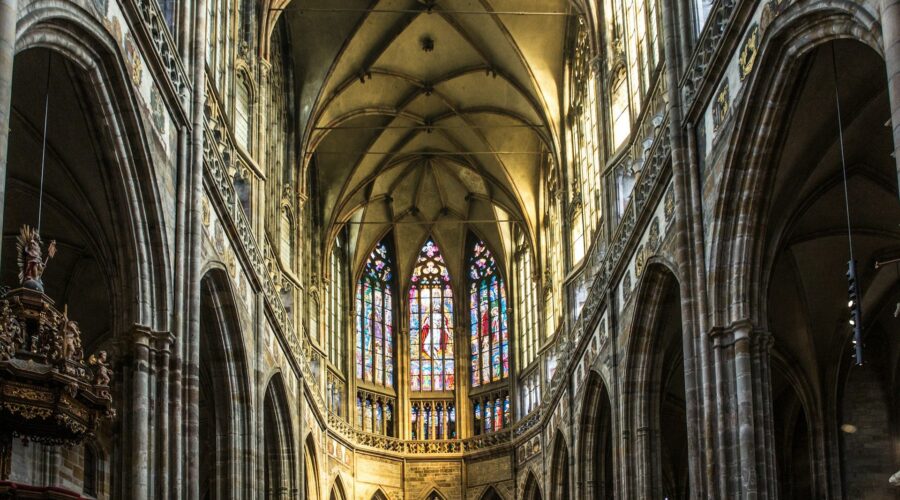
Meet the Church Fathers: Guardians of Early Christian Thought
Embark on a journey through time to meet the Church Fathers, influential theologians who shaped Christianity in its formative years. Their writings, teachings, and debates laid the groundwork for Christian doctrine, ethics, and spirituality.
Who Were the Church Fathers?
The Church Fathers were early Christian leaders, scholars, and theologians who lived between the 1st and 8th centuries. They played a pivotal role in developing and interpreting Christian beliefs, establishing church structures, and defending the faith against heresies.
Characteristics of the Church Fathers:
- Strong biblical knowledge and exegetical skills
- Deep understanding of Greek and Roman philosophy
- Commitment to the orthodox faith
li>Influence on church doctrine, practice, and discipline
Major Church Fathers and Their Contributions
Numerous Church Fathers made significant contributions to Christian thought and practice. Here are some of the most notable:
Apostles
- Peter: First pope and leader of the early church
- Paul: Missionary who spread Christianity throughout the Roman Empire
- John: Disciple who wrote the Gospel of John and the Book of Revelation
Apostolic Fathers
- Clement of Rome: Fourth pope, known for his letter to the Corinthians
- Ignatius of Antioch: Bishop who died as a martyr
- Polycarp of Smyrna: Bishop who was a disciple of John
Greek Church Fathers
- Origen: Prolific biblical scholar and theologian
- Athanasius: Defender of the Trinity
- John Chrysostom: Renowned preacher and liturgist
Latin Church Fathers
- Tertullian: Early Latin theologian who coined the term “Trinity”
- Augustine of Hippo: Influential theologian known for his writings on grace and original sin
- Jerome: Translator of the Bible into Latin (Vulgate)
Influence on Christian Doctrine and Practice
The Church Fathers played a crucial role in developing many key Christian doctrines and practices, including:
Doctrinal Contributions
- Trinity: The doctrine of the three persons in one God
- Incarnation: The belief that Jesus Christ is both fully human and fully divine
- Original sin: The idea that all humans are born with a sinful nature
- Sacraments: Baptism, Eucharist, and other religious practices
Liturgical Contributions
- Development of the liturgy (worship service)
- Establishment of clerical orders (bishops, priests, deacons)
- Formalization of church structures and practices
Tips for Studying the Church Fathers
To delve deeper into the writings and teachings of the Church Fathers, consider these tips:
- Start with primary sources: Read their original works to gain firsthand insights into their ideas.
- Understand the context: Research the historical and theological context in which they wrote.
- Consult secondary sources: Utilize books and commentaries to provide additional perspectives.
- Seek guidance from experts: Attend lectures or workshops led by scholars specializing in patristics.
- Engage in prayer and reflection: Allow their teachings to inspire your spiritual growth and understanding.
Conclusion
The Church Fathers were influential figures who shaped the foundations of Christianity. By studying their writings, we can gain a deeper appreciation for the development of Christian doctrine, practice, and spirituality. Their teachings continue to provide guidance and inspiration for believers today.
Remember, the journey into the world of the Church Fathers is an ongoing exploration. May this post ignite a spark within you to continue learning about their invaluable contributions.
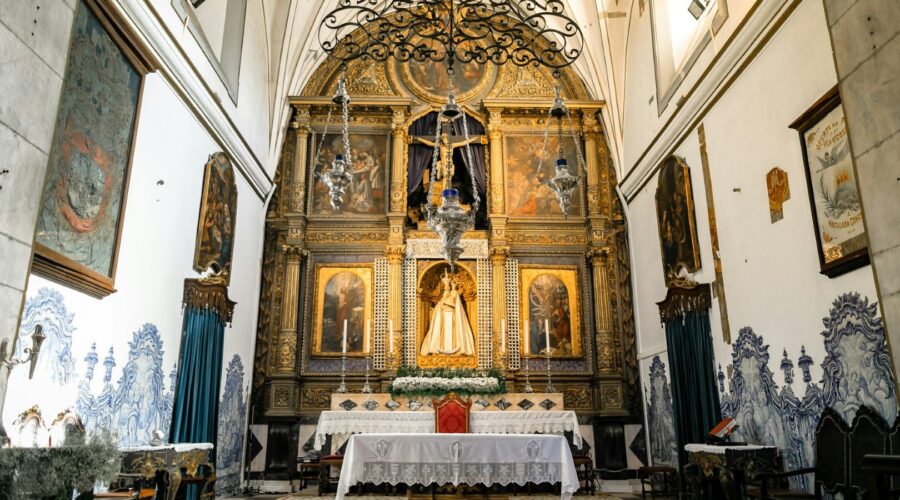
Discover the Architectural Marvel: Cathedral of Our Lady of the Angels
“`html
Nestled in the heart of Los Angeles, the Cathedral of Our Lady of the Angels stands as a testament to architectural innovation and spiritual grandeur. This modern masterpiece, designed by renowned architect José Rafael Moneo, is a symphony of light, space, and symbolism, captivating visitors from around the world.
History and Construction
The Cathedral of Our Lady of the Angels was commissioned in 1990 to replace the original cathedral that was severely damaged in the 1994 Northridge earthquake. After extensive planning and fundraising, construction began in 1997 and was completed in 2002, becoming the seat of the Archdiocese of Los Angeles.
Architectural Style
The cathedral’s architectural style blends elements of modernism, traditional ecclesiastical architecture, and regional influences. Moneo drew inspiration from the California landscape, the Cathedral of Chartres, and the Spanish colonial mission churches of California.
Light and Space
Natural light floods the cathedral through an abundance of windows, creating a sense of ethereal beauty. The massive skylight above the altar casts a celestial glow, symbolizing the presence of the divine. The open floor plan and high ceilings foster a feeling of spaciousness and grandeur.
Materials and Craftsmanship
The cathedral’s exterior is clad in a warm, golden travertine limestone, while the interior features polished wood, marble, and granite. Craftsmen from around the world contributed to the intricate details, including stained glass windows, bronze sculptures, and mosaic tiles.
Interior Design
The interior of the cathedral is a harmonious blend of modern and traditional elements. The central focus is the altar, located beneath the awe-inspiring skylight. The apse is adorned with a massive mosaic of Our Lady of the Angels, surrounded by a procession of saints and angels.
Transepts and Ambulatory
The cathedral’s transepts extend outward from the central nave, creating a cruciform shape. The ambulatory, a passageway surrounding the apse, provides access to the Lady Chapel and the Chapel of Christ the King.
Lady Chapel
The Lady Chapel, located on the Gospel side of the cathedral, is dedicated to the Virgin Mary. The chapel features a beautiful marble statue of Our Lady of Guadalupe and a mosaic of the Holy Family.
Chapel of Christ the King
The Chapel of Christ the King, located on the Epistle side of the cathedral, is dedicated to Jesus Christ. The chapel features a striking bronze sculpture of Christ the King and a mosaic depicting the Ascension.
Symbolism and Meaning
Every aspect of the Cathedral of Our Lady of the Angels has been imbued with rich symbolism. The number of windows (12) represents the twelve apostles. The skylight symbolizes the light of Christ. The apse mosaic depicts the Virgin Mary as the Queen of Angels, interceding for sinners.
The cathedral is not only a place of worship but also a center for community and cultural events. It hosts concerts, exhibitions, lectures, and tours, providing a space for spiritual growth, cultural enrichment, and dialogue.
Tips for Visitors
- Allow ample time to explore the cathedral’s interior and exterior.
- Attend a Mass or service to experience the cathedral’s sacred ambiance.
- Take a guided tour to learn about the history, architecture, and symbolism of the cathedral.
- Visit the Cathedral Plaza, which features a water garden, sculptures, and a labyrinth.
- Consider visiting the nearby Museum of Contemporary Art (MOCA) or the Walt Disney Concert Hall for a complementary cultural experience.
Conclusion
The Cathedral of Our Lady of the Angels is a masterpiece of modern architecture that transcends religious boundaries. Its awe-inspiring design, rich symbolism, and welcoming atmosphere make it a must-visit destination for anyone visiting Los Angeles. Whether you are a spiritual seeker, an architecture enthusiast, or simply appreciate beauty, the Cathedral of Our Lady of the Angels is a place that will leave an enduring impression.
“`
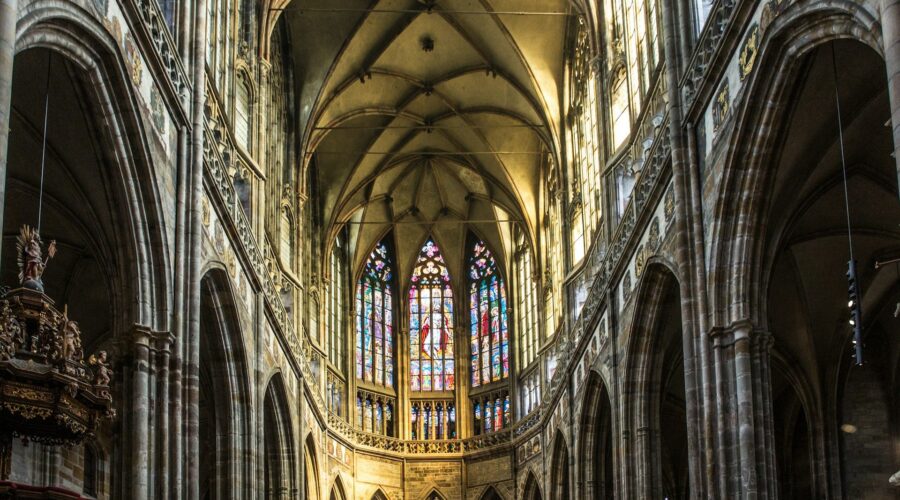
Pilgrim Rest: A Haven for Spiritual Renewal and Tranquility
Introduction
Pilgrim Rest, a serene destination nestled amidst the picturesque Blue Ridge Mountains of South Carolina, beckons weary souls seeking respite, spiritual rejuvenation, and a profound connection with their inner selves. This idyllic sanctuary offers a perfect blend of natural beauty, historical significance, and a vibrant spiritual community that fosters personal growth and transformation.
Historical Significance of Pilgrim Rest
Pilgrim Rest traces its roots back to the 18th century, when it served as a gathering place for enslaved Africans who escaped to freedom along the Underground Railroad. In 1872, the African Methodist Episcopal (AME) Church established a camp meeting ground here, which quickly became a hub for religious gatherings, revivals, and community empowerment.
Over the years, Pilgrim Rest played a pivotal role in the civil rights movement. Martin Luther King Jr. and other notable leaders visited the site and delivered powerful sermons that inspired and rallied the community. Today, Pilgrim Rest stands as a testament to the resilience, faith, and activism of those who fought for equality and justice.
Spiritual Renewal at Pilgrim Rest
Pilgrim Rest is renowned for its transformative spiritual atmosphere. The serene surroundings, coupled with the vibrant worship services and programs, create an environment conducive to deep introspection, prayer, and communion with God.
- Worship Services: Pilgrim Rest AME Church offers regular Sunday services, mid-week Bible studies, and special worship events that foster spiritual growth.
- Retreats and Conferences: The Pilgrim Rest Retreat & Conference Center hosts various retreats, conferences, and workshops designed to deepen spiritual understanding, promote personal development, and inspire change.
- Prayer Trails: Pilgrim Rest boasts peaceful prayer trails that meander through the woods, providing solitude and opportunities for quiet reflection and communing with nature.
Tranquility in Nature
Beyond its spiritual significance, Pilgrim Rest is also a haven for nature enthusiasts, offering an escape from the hustle and bustle of daily life.
- Hiking Trails: Numerous hiking trails wind through the surrounding Blue Ridge Mountains, ranging from easy to challenging, showcasing stunning views and diverse flora.
- Lake Murray: Just a short drive from Pilgrim Rest, Lake Murray beckons with its pristine waters and abundant opportunities for fishing, boating, and swimming.
- Table Rock State Park: A scenic park located nearby, Table Rock State Park features breathtaking waterfalls, hiking trails, and panoramic vistas.
Community Connection and Growth
Pilgrim Rest is more than a spiritual retreat; it’s a vibrant community that welcomes visitors with open arms.
- Community Center: The Pilgrim Rest Community Center serves as a gathering place for social events, educational programs, and initiatives that foster community development.
- Historical Sites: The site boasts several historical buildings, including the Pilgrim Rest Cabin and the AME Church, which offer glimpses into the area’s rich past.
- Local Businesses: Pilgrim Rest supports local businesses that provide quality goods and services, including restaurants, cafes, and shops selling artisanal crafts and souvenirs.
Planning Your Pilgrimage
To embark on your pilgrim journey to Pilgrim Rest, consider the following tips:
- Accommodation: Pilgrim Rest offers various lodging options, including the Pilgrim Rest Guest House and nearby hotels and vacation rentals.
- Meals: The Pilgrim Rest Dining Hall provides delicious and wholesome meals, while the local restaurants offer a range of dining options.
- Transportation: Pilgrim Rest is accessible by car and is conveniently located near major highways. Shuttle services and taxi services are also available.
- Recommended Length of Stay: A weekend or longer is recommended to fully experience the spiritual atmosphere and tranquility of Pilgrim Rest.
Events Calendar Date Event February 18-19 Prayer and Fasting Weekend March 4-6 Women’s Retreat April 15-17 Spring Revival Conclusion
Pilgrim Rest beckons all who seek spiritual renewal, tranquility, and a profound connection with their inner selves. Its rich history, vibrant spiritual community, stunning natural surroundings, and welcoming atmosphere make it a truly transformative destination. Whether you’re seeking respite from life’s challenges, inspiration for personal growth, or simply a chance to connect with nature and your spirituality, Pilgrim Rest invites you on a journey of peace, rejuvenation, and lasting impact.

Discover the Heart of Community and Faith: Parkway Baptist Church
About Parkway Baptist Church
Parkway Baptist Church is a vibrant Christian community located in the heart of [City]. Founded in [Year], our church has been a beacon of hope and spiritual guidance for generations. We are a diverse and welcoming congregation, where everyone is valued and encouraged to grow in their faith.
Mission Statement:
“To love God, love others, and make disciples of Jesus Christ.”
Core Values:
* Worship: We prioritize the worship of God through music, prayer, and biblical teaching.
* Discipleship: We believe in equipping believers to live out their faith and follow Jesus in all areas of life.
* Evangelism: We share the love of Christ with our community and the world through outreach and service.
* Fellowship: We foster a strong sense of community and support among our members.
* Excellence: We strive for excellence in all that we do, honoring God and inspiring others.Ministries and Programs
Parkway Baptist Church offers a wide range of ministries and programs to meet the spiritual, social, and educational needs of our members and community.
Sunday Services:
* Traditional Worship (9:30 AM): A blend of classic hymns and contemporary music, with a focus on biblical preaching.
* Contemporary Worship (11:00 AM): A lively and engaging service with modern music and relevant messages.Children’s Ministry:
* Sunday School (9:30 AM and 11:00 AM): Age-appropriate Bible lessons, games, and activities.
* AWANA (Wednesday evenings): A fun and interactive program for children ages 3-12.Youth Ministry:
* Student Ministries (Sunday and Wednesday): Youth services, Bible studies, and outreach opportunities.
Adult Ministries:
* Bible Studies: Small groups for in-depth study of the Bible and spiritual growth.
* Women’s Ministries: Events, retreats, and Bible studies designed for women.
* Men’s Ministries: Breakfasts, Bible studies, and service projects.
* Senior Adult Ministries: Socials, day trips, and special services.Community Outreach
Parkway Baptist Church is committed to making a positive impact on our community. We partner with local organizations and participate in various outreach initiatives, including:
* Food Pantry: Provides groceries to families in need.
* Clothing Closet: Offers free clothing to individuals and families.
* Community Events: Participates in neighborhood clean-ups, festivals, and other events.
* Mission Trips: Supports mission work in the United States and abroad.Service Opportunities
Members of Parkway Baptist Church are encouraged to participate in service and ministry. We offer many opportunities for individuals to use their gifts and talents to serve God and others.
* Worship Team: Musicians, singers, and multimedia technicians.
* Audio-Visual Team: Camera operators, sound engineers, and projectionists.
* Children’s Ministry: Teachers, assistants, and nursery workers.
* Youth Ministry: Mentors, youth leaders, and chaperones.
* Outreach Team: Volunteers for food pantries, clothing closets, and community events.How to Get Involved
* Visit us for a Sunday service.
* Join a small group or Bible study.
* Volunteer for a ministry or service opportunity.
* Get baptized and become a member.Contact Information:
Address: [Church Address]
Phone: [Phone Number]
Website: [Church Website]Additional Resources
* Listen to sermons online.
* View our event calendar.
* Support the ministry.Conclusion
Parkway Baptist Church is a vibrant and inviting community of believers who are passionate about sharing the love of Jesus with others. We invite you to join us for worship, fellowship, and service as we strive to live out our mission and follow God’s plan for our lives.
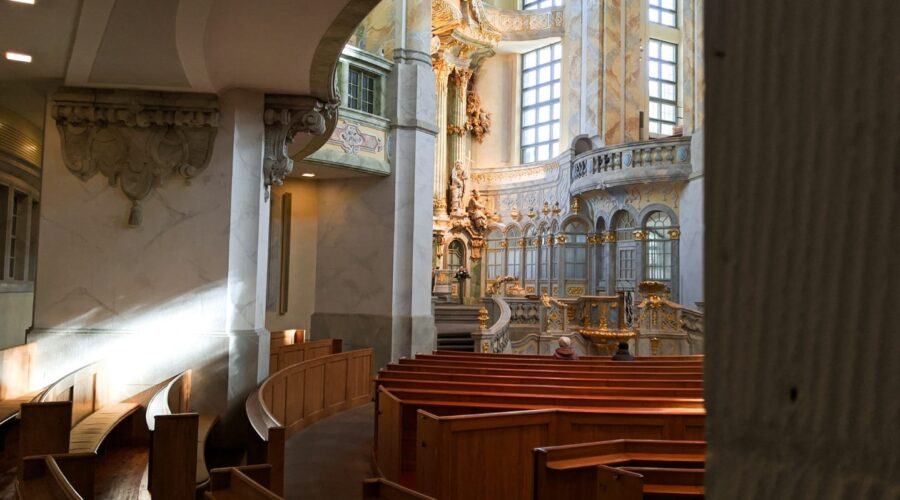
Saint Bartholomew: The Apostle of India, Persia, and Armenia
Introduction
Saint Bartholomew, also known as Nathanael, was one of the twelve apostles of Jesus Christ. He is believed to have spread the gospel throughout India, Persia, and Armenia, eventually becoming a martyr for his faith.
Early Life and Calling
Born in Cana of Galilee, Bartholomew was a devout Jew who studied the Torah diligently. When Jesus called out to him, asking him to follow, Bartholomew was initially hesitant. However, after Jesus revealed his true identity as the Son of God, Bartholomew immediately became a disciple.
Missionary Journeys
Bartholomew played a significant role in Jesus’ ministry, witnessing many of his miracles and teachings. After the resurrection of Jesus, Bartholomew embarked on missionary journeys, traveling extensively throughout the Eastern world.
India
Tradition holds that Bartholomew traveled to India and preached the gospel in the region known as Malabar. He is believed to have established several churches and converted many Hindus to Christianity.
Persia
Bartholomew’s missionary work extended to Persia (modern-day Iran), where he is said to have converted the king and many citizens. However, his success drew the ire of Zoroastrian priests, who ultimately led to his martyrdom.
Armenia
Bartholomew also visited Armenia, where he is credited with introducing Christianity to the kingdom. He is revered as one of the patron saints of the Armenian Apostolic Church.
Martyrdom
According to legend, Bartholomew was flayed alive in Derbend, Persia, around 68 AD. His skin was then filled with straw and used as a scarecrow in a vineyard. Despite the gruesome nature of his death, Bartholomew remained steadfast in his faith.
Biblical Accounts
Bartholomew is mentioned in several passages of the Bible:
- In the Gospel of John, Bartholomew is identified as one of the disciples who witnessed Jesus walking on water (John 6:7-15).
- In the Acts of the Apostles, Bartholomew is listed as one of the apostles present at the Pentecost (Acts 1:13).
Legacy and Veneration
Saint Bartholomew is celebrated as a martyr and missionary saint in both the Eastern and Western Christian traditions. He is often depicted in art holding his own skin, a symbol of his martyrdom.
Churches and cathedrals dedicated to Saint Bartholomew can be found around the world, including:
- St. Bartholomew’s Cathedral, New York City
- St. Bartholomew’s Cathedral, Frankfurt, Germany
- Basilica of San Bartolomeo all’Isola, Rome, Italy
Prayer to Saint Bartholomew
O Saint Bartholomew, intrepid apostle,
You preached the Gospel with fervor and zeal,
Converting countless souls to the faith.
In your martyrdom, you showed unwavering courage,
Bearing witness to the power of Christ’s love.Pray for us, that we may have the same missionary spirit,
To spread the Good News far and wide,
To proclaim the truth of the Gospel,
And to witness to the love of Jesus Christ.Amen.
Additional Information
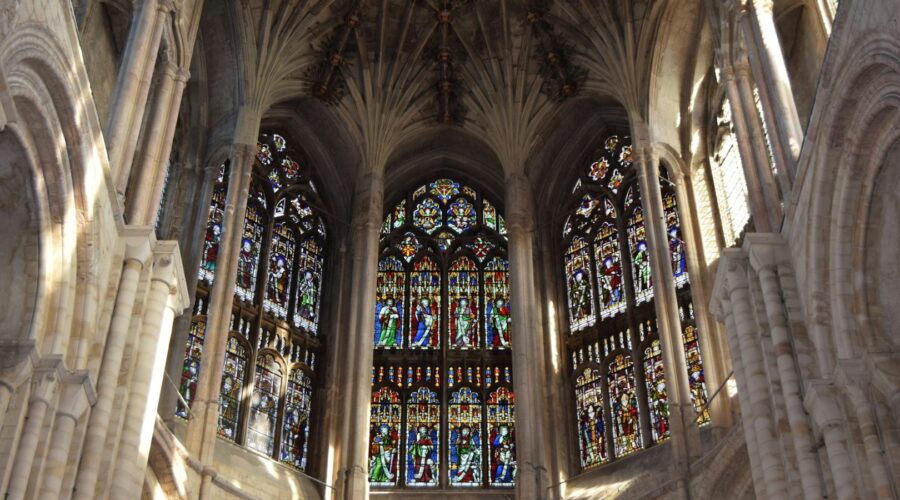
St. Aloysius Church: A Historical and Architectural Landmark
Introduction
St. Aloysius Church is a prominent Roman Catholic parish church located in the heart of College Park, Maryland. The church is dedicated to St. Aloysius Gonzaga, a 16th-century Italian Jesuit saint known for his piety and devotion. Founded in 1882, St. Aloysius Church has played a vital role in the religious, educational, and social life of the College Park community.
Architectural Significance
Neo-Gothic Revival Style
St. Aloysius Church is renowned for its stunning Neo-Gothic Revival architectural style, which was prevalent in the late 19th and early 20th centuries. The church’s exterior features a cruciform plan with a steeply pitched gable roof, pointed-arch windows, and elaborate buttresses.
Interior Ambiance
The interior of St. Aloysius Church is equally impressive, characterized by its soaring vaulted ceilings, intricate stained-glass windows, and ornate altarpieces. The painted decorations and murals depict biblical scenes and saints, creating a serene and uplifting atmosphere.
Historical Legacy
Foundation and Growth
St. Aloysius Church was founded in 1882 by a small group of Catholic settlers who sought to establish a place of worship in the growing community of College Park. The church’s first structure was a modest wooden chapel, which was later replaced by a larger brick church in 1893.
Educational Center
From its inception, St. Aloysius Church has been closely associated with education. The church established St. Patrick’s School in 1885, which provided primary and secondary education to the Catholic children of the parish. Over the years, the school expanded and evolved into the present-day St. Aloysius Gonzaga School.
Community Involvement
St. Aloysius Church has always been deeply involved in the social and charitable life of the College Park community. The church operates a food pantry, provides support for the homeless, and hosts various community events and outreach programs.
Worship and Sacraments
Mass Schedule
St. Aloysius Church offers daily and Sunday Mass, allowing parishioners to participate in the Holy Sacrifice of the Mass and receive the sacraments.
Day Weekday Mass Sunday Mass Monday-Friday 7:30 AM – Saturday 5:00 PM – Sunday – 8:00 AM, 10:00 AM, 12:00 PM, 5:00 PM Reconciliation and Anointing
Confession and Anointing of the Sick are available during designated times each week.
Eucharistic Adoration
The Blessed Sacrament is exposed for adoration in the Adoration Chapel every Tuesday from 7:00 PM to 8:00 PM.
Parish Life and Ministries
Choir and Music
St. Aloysius Church is known for its vibrant choir and music ministry. The choir performs at Masses and special events, enhancing the worship experience through their melodious harmonies.
Youth Group
The church has an active youth group for young people in grades 6-12. The youth group provides opportunities for faith formation, service projects, and social activities.
Seniors Group
St. Aloysius Church also has a seniors group for parishioners over the age of 55. The seniors group organizes social events, educational programs, and volunteer opportunities.
Visitor Information
Location and Contact
St. Aloysius Church is located at 9310 Annapolis Road, College Park, Maryland 20740.
Contact the church at (301) 474-3500 or visit their website at https://www.staloysiuschurch.org.
Tours and Pilgrimages
Guided tours of St. Aloysius Church are available upon request. Pilgrimages to the church are also welcomed, especially during the feast of St. Aloysius Gonzaga (June 21st).
Accessibility
St. Aloysius Church is committed to accessibility for all visitors. The church has wheelchair ramps and an elevator to ensure that everyone can fully participate in церковные службы and events.
Conclusion
St. Aloysius Church is a magnificent historical and architectural landmark that continues to serve as a vibrant center of Catholic faith and community in College Park. The church’s stunning Neo-Gothic Revival style, rich history, and diverse ministries make it a beloved destination for worshipers, visitors, and pilgrims alike.

Unveiling the Life, Ministry, and Legacy of Saint Peter: The Rock upon Which the Church Was Built
Introduction
Saint Peter, the enigmatic and influential disciple of Jesus Christ, holds a prominent position in Christian history and doctrine. Known as the “Rock” upon which Jesus built his church (Matthew 16:18), Peter played a pivotal role in the early spread of Christianity and the formation of its core beliefs.
Early Life and Calling
Peter was born as Simon in Bethsaida, a fishing village on the Sea of Galilee. He was a fisherman by trade and had a brother named Andrew, who also became a disciple of Jesus. According to the Gospel accounts, Jesus met Simon and called him to follow, giving him the new name “Peter” (meaning “rock”).
Life with Jesus
Peter became one of Jesus’ closest disciples, a member of the inner circle that included James and John. He witnessed many of Jesus’ miracles, including the feeding of the five thousand and the walking on water. Peter’s impulsive and outspoken nature is often depicted in the Gospels, such as when he declared his belief in Jesus as the Messiah (Matthew 16:16-18) and later denied him during his crucifixion (Matthew 26:69-75).
The Rock of the Church
In the Gospel of Matthew, Jesus gives Peter the authority to “bind and loose” (Matthew 16:19), symbolizing his role as the foundation and authority in the church. After Jesus’ resurrection, Peter became a prominent leader among the apostles. He preached the first Pentecost sermon (Acts 2:14-41), played a key role in the early church councils (Acts 15), and is credited with establishing the church in Rome.
Persecution and Martyrdom
Like many early Christians, Peter faced persecution for his faith. According to tradition, he was crucified upside down in Rome during the reign of Emperor Nero around 64 AD. His tomb is believed to be located beneath St. Peter’s Basilica in Rome, where he is venerated as the first pope and the patron saint of the Catholic Church.
Legacy and Significance
Saint Peter’s legacy as the “Rock” of the church continues to shape Christianity today. His role as a foundational figure, his leadership in spreading the gospel, and his unwavering faith provide important lessons for believers worldwide.
Table of Key Events in Peter’s Life
| Event | Approximate Date |
|—|—|
| Birth in Bethsaida | 1st century AD |
| Called as a disciple by Jesus | 29-30 AD |
| Jesus gives Peter the name “Rock” | 30 AD |
| Pentecost sermon | 33 AD |
| Establishment of the church in Rome | 45-60 AD |
| Martyrdom | 64 AD |Related Figures
Prayer to Saint Peter
O Saint Peter, Rock of the Church,
We ask for your intercession and guidance.
Help us to be steadfast in our faith,
And to follow the example of your unwavering devotion.
Protect us from persecution and harm,
And lead us to eternal salvation.
Amen.Conclusion
Saint Peter, the enigmatic and influential apostle, remains a towering figure in Christian history. His life, ministry, and legacy continue to inspire believers worldwide. As the “Rock” upon which the church was built, Peter’s unwavering faith and leadership provide a foundation for the Christian faith and a reminder of the importance of God’s grace and mercy.
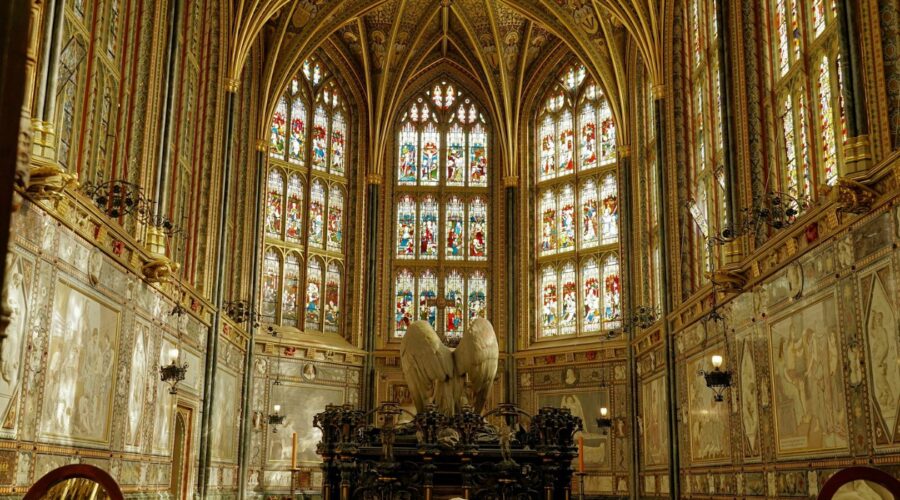
Delve into the History and Wonders of St Gregory Church
Introduction: Immerse yourself in the captivating history and architectural splendor of St Gregory Church, a magnificent edifice that has stood the test of time. From its origins to its current status as a cherished landmark, this blog post will guide you through the fascinating journey of this sacred sanctuary.
A Historical Tapestry
Early Foundations:
The roots of St Gregory Church lie in the 13th century, when the Knights Templar established a commandery in the area. The original church was a modest structure, likely built of wood or stone.
Medieval Marvel:
In the 15th century, a grander church was constructed under the patronage of Pope Gregory IX. This Gothic masterpiece featured a cruciform plan, ribbed vaulting, and intricate stained-glass windows.
Post-Reformation Transformations:
After the Reformation, the church underwent significant alterations. The nave was rebuilt in the 17th century, while the tower was added in the 18th century. These modifications blended Gothic and Renaissance elements, creating a unique architectural style.
Architectural Splendor
Exterior Elegance:
St Gregory Church is a breathtaking example of Gothic architecture. Its façade is adorned with intricate carvings and sculptures, depicting biblical scenes and religious figures. The graceful tower, with its octagonal top, dominates the skyline.
Interior Grandeur:
Step inside to marvel at the church’s opulent interior. The spacious nave is illuminated by stunning stained-glass windows, casting a kaleidoscope of colors throughout the sanctuary. The ribbed vaults soar overhead, creating a sense of awe and inspiration.
Sacral Treasures:
St Gregory Church houses a collection of priceless artifacts, including a medieval rood screen, intricately carved choir stalls, and an exquisite altarpiece. These treasures add to the spiritual ambiance and historical significance of the building.
Community Hub and Cultural Legacy
Center of Worship:
St Gregory Church remains an active place of worship, hosting regular services and religious ceremonies. The vibrant parish community gathers within its walls to celebrate faith and connect spiritually.
Arts and Culture:
Beyond its religious significance, St Gregory Church has also played a vital role in the local arts and culture scene. It has hosted concerts, exhibitions, and other cultural events, enriching the lives of the community.
Heritage Conservation:
Recognizing its historical and architectural importance, St Gregory Church has been designated as a Grade I listed building. This status ensures its preservation for future generations.
Visiting St Gregory Church
Location:
St Gregory Church, Temple, Bristol BS1 6PL
Opening Hours:
- Monday-Saturday: 10 AM – 4 PM
- Sunday: Open for worship services
Admission:
Admission is free. Donations are welcome to support the upkeep of the church.
Conclusion
St Gregory Church is a testament to the enduring power of faith, architectural brilliance, and community spirit. Its rich history, stunning architecture, and vibrant present make it a must-visit destination for anyone interested in the history, culture, and beauty of Bristol. As you explore its hallowed halls, let the grandeur and sanctity of this sacred space inspire and uplift your soul.
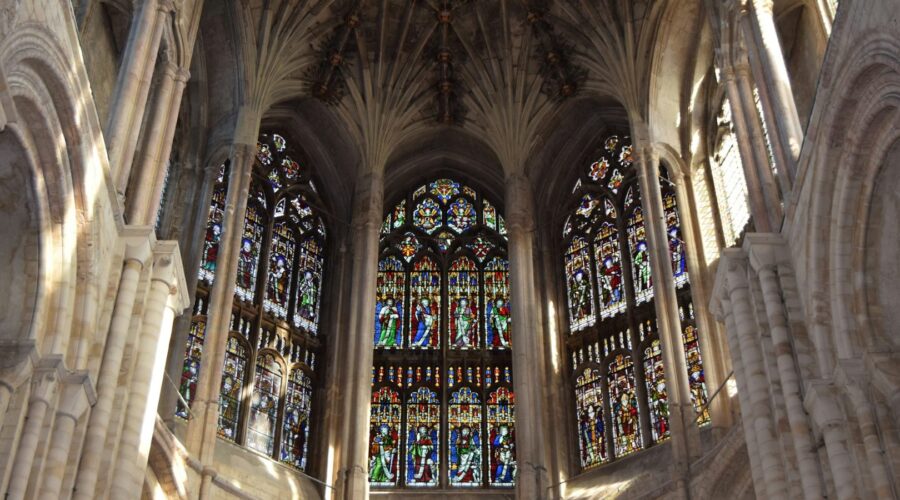
Discover the CSI Church Near You: A Comprehensive Guide
What is the CSI Church?
The Church of South India (CSI) is a united Protestant church in India. It was formed in 1947 by the merger of the Anglican, Methodist, Congregational, Presbyterian, and Reformed churches of the subcontinent. Today, the CSI is one of the largest Protestant denominations in the world, with over 15 million members in 24 dioceses across India and Sri Lanka.
CSI Beliefs and Practices
- The CSI believes in the Trinity (God the Father, God the Son, and God the Holy Spirit).
- The CSI holds the Bible as the authoritative Word of God.
- The CSI practices believer’s baptism and Holy Communion.
- The CSI is committed to social justice and diakonia (service to the poor and marginalized).
Finding a CSI Church Near You
Finding a CSI church near you can be easy. Here are some tips:
- Use the CSI website: The CSI has a website with a directory of churches. You can search for churches by location, language, or other criteria.
- Social Media: Check social media platforms like Facebook and Twitter where there might be local CSI churches and communities with online groups.
- Ask friends or family: If you know someone who attends a CSI church, they may be able to recommend a church near you.
- Visit the local YMCAs or YWCAs: They often have connections to local CSI community and congregations.
What to Expect When You Visit a CSI Church
- A warm welcome: CSI churches are known for their hospitality. You will likely be greeted by a friendly usher or member of the congregation.
- A lively worship service: CSI worship services are typically joyful and filled with music. You can expect to hear traditional hymns, contemporary Christian songs, and Scripture readings.
- A relevant sermon: The sermon will be based on the Bible and will address real-life issues.
- An opportunity to meet new people: After the service, you will have a chance to meet other members of the congregation and learn more about the church.
Getting Involved in a CSI Church
There are many ways to get involved in a CSI church. You can:
- Attend worship services regularly.
- Join a Bible study group.
- Volunteer for a church ministry.
- Be baptized or confirmed.
- Become a member of the church.
Benefits of Attending a CSI Church
There are many benefits to attending a CSI church. Here are a few:
- You will be part of a community of faith.
- You will grow in your spiritual life.
- You will make new friends.
- You will be able to make a difference in the world.
Conclusion
If you are looking for a church home, we encourage you to visit a CSI church near you. We believe that you will find a warm and welcoming community where you can grow in your faith and make a difference in the world.
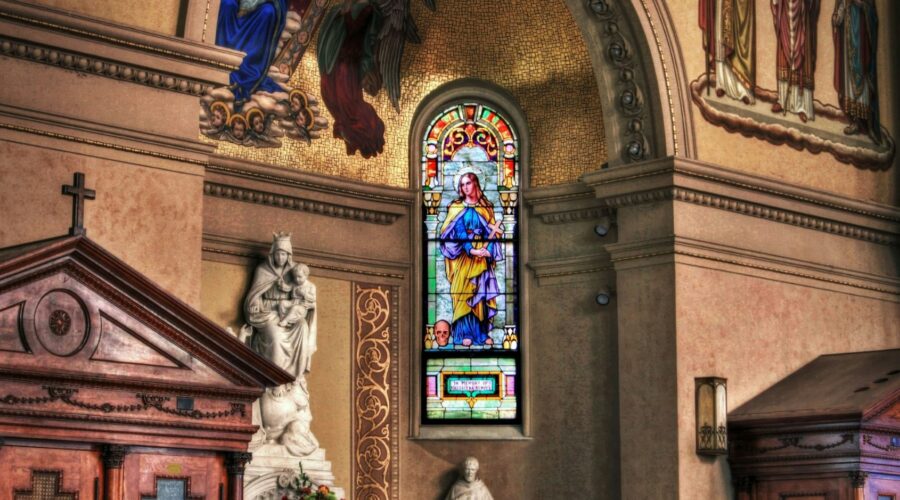
John Osteen: A Life of Faith, Leadership, and Legacy
Introduction
John Osteen, the revered pastor and author, captivated hearts and inspired countless lives throughout his remarkable ministry. From his humble beginnings to his global impact, his journey is a testament to the transformative power of faith, leadership, and service.
Early Life and Call to Ministry
John Osteen was born on April 21, 1921, in Humble, Texas. Raised in a devout Christian home, he experienced a profound calling to ministry at a young age. After graduating from Baylor University, he was ordained as a Baptist minister in 1946.
- Early influences:
- Sunday school teacher
- Parents’ devout faith
- Baptist upbringing
- Ordination in 1946
- Pastoral beginnings at First Baptist Church in Port Arthur
Founding of Lakewood Church
In 1959, John Osteen established Lakewood Church in a rented storefront in Houston, Texas. With unwavering faith and a relentless pursuit of God’s purpose, he built Lakewood into one of the largest and most influential churches in the world.
- Vision for a vibrant and welcoming church
- Initial location in a small storefront
- Growth through evangelism and community outreach
- Relocation to a former roller-skating rink
- Construction of the Lakewood Church campus
Leadership and Ministry Style
John Osteen was renowned for his exceptional leadership abilities and his passion for spreading the gospel message. His ministry was characterized by:
- Heartfelt and relatable sermons
- Emphasis on faith, hope, and positive thinking
- Anointed preaching that touched millions
- Building a global televangelist ministry
- Nurturing a loving and supportive church community
Family and Personal Life
John Osteen married Dodie Ivie in 1944, and together they raised four children: Lisa, Paul, Tamara, and April. His family played a vital role in his ministry and legacy.
- Marriage to Dodie Ivie
- Support from his wife and children
- Family values and strong bond
- Private life focused on faith and family
Legacy and Impact
John Osteen’s legacy extends far beyond his lifetime. His teachings continue to inspire and transform lives through books, sermons, and the ongoing ministry of Lakewood Church.
- Thousands of churches planted worldwide
- Reach of his message through television and media
- Establishment of humanitarian organizations
- Model for effective church leadership
- Inspiration to countless Christians and non-Christians alike
Table: Key Milestones in John Osteen’s Life
| Year | Milestone |
|—|—|
| 1921 | Born in Humble, Texas |
| 1946 | Ordained as a Baptist minister |
| 1959 | Founded Lakewood Church |
| 1982 | Relocated Lakewood Church to a former roller-skating rink |
| 1986 | Completed construction of the Lakewood Church campus |
| 1999 | Preached to over 70 million people worldwide |
| 2019 | Passed away at the age of 97 |Conclusion
John Osteen was a visionary leader, a gifted teacher, and a beacon of hope for millions around the world. His life and ministry serve as a powerful reminder of the transformative power of faith, the importance of strong leadership, and the enduring legacy that can be built through a life dedicated to serving others.
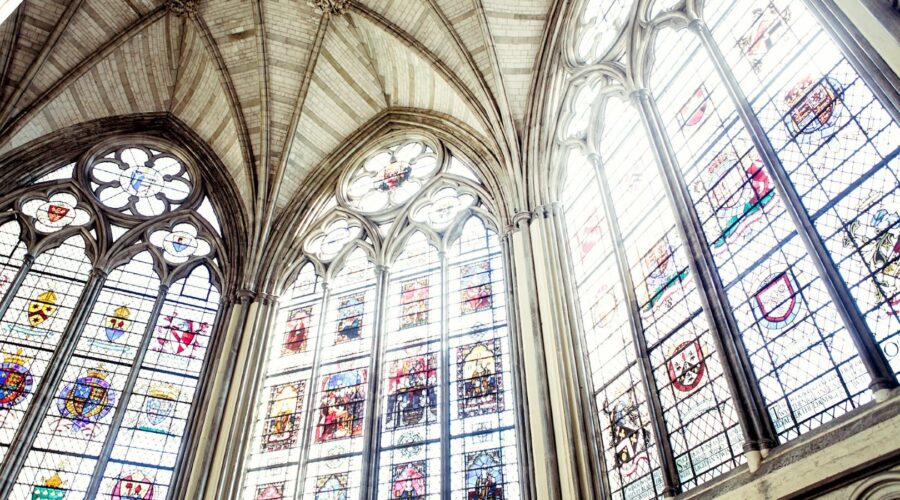
Discover the Evangelical Presbyterian Church: A Guide to Beliefs, History, and Missions
Introduction
The Evangelical Presbyterian Church (EPC) is a vibrant and growing denomination with a rich heritage and a strong commitment to biblical truth. This comprehensive guide will delve into the distinctive beliefs, fascinating history, and active missions of the EPC, providing you with valuable insights into this dynamic Christian community.
II. Beliefs
A. Core Tenets
- The Sovereignty of God: We believe that God is supreme over all creation and that His will prevails over all circumstances.
- The Trinity: We affirm the existence of the triune God: Father, Son, and Holy Spirit, each distinct but unified in essence.
- The Authority of Scripture: We hold that the Bible is the inspired and infallible Word of God, the ultimate authority for faith and practice.
- The Sinfulness of Humanity: We believe that all have sinned and fallen short of God’s glory, deserving His judgment.
- The Grace of God: We proclaim that salvation is a free gift of God’s grace, given to us through faith in Jesus Christ.
B. Doctrinal Distinctives
- Presbyterian Polity: The EPC employs a representative form of government, where authority is vested in elders and deacons elected by the congregation.
- Evangelical Emphasis: We prioritize evangelism and missions, believing that the gospel must be shared with the world.
- Ecumenical Involvement: The EPC actively participates in interdenominational relationships, seeking unity and cooperation among Christians.
III. History
A. Origins and Early Development
The EPC traces its roots back to the 19th century, emerging from the division in the Presbyterian Church in the United States (PCUS) over issues of slavery and modernization. In 1861, the EPC was founded as a separate denomination with a strong commitment to evangelical principles.
B. Key Events and Leaders
- The Civil War: The EPC supported the Union during the Civil War and actively ministered to soldiers and their families.
- J. Laurence Schaff: Dr. Schaff, an influential theologian and author, served as a prominent leader in the EPC.
IV. Missions
A. Global Outreach
The EPC is actively involved in missions worldwide, with a focus on evangelism, church planting, and humanitarian aid. Key mission fields include Africa, Asia, Latin America, and the Middle East.
- World Mission: The EPC supports over 500 missionaries serving in more than 60 countries.
- Partnerships and Collaborations: The EPC partners with other organizations, churches, and ministries to maximize impact.
B. Domestic Ministries
The EPC also engages in extensive ministries within North America, addressing issues such as poverty, homelessness, and social justice.
- Community Outreach: EPC churches partner with local organizations to provide food, shelter, and support to those in need.
- Leadership Development: The EPC invests in training and equipping future leaders for ministry and service.
V. Current Status and Challenges
Today, the EPC is a vibrant and growing denomination with over 700 congregations and 130,000 members. However, the church faces challenges such as:
- Changing Culture: The EPC navigates the shifting societal norms and cultural values that can impact faith and practice.
- Ministry Expansion: The EPC seeks to expand its missions and ministries while maintaining financial sustainability.
VI. Conclusion
The Evangelical Presbyterian Church stands as a testament to the power of biblical truth, evangelical fervor, and a deep commitment to mission. With its rich history and vibrant present, the EPC continues to be a beacon of hope, serving its members and impacting the world for Christ. Whether you are drawn to its core beliefs, fascinated by its history, or inspired by its missions, the EPC offers a welcoming community where faith and purpose can be discovered and lived out.
Resources
For further exploration, consider the following resources:

Saint Gregory the Great: A Guiding Light in the Dark Ages
Introduction
Saint Gregory the Great, also known as Gregory I, was a towering figure in the history of Christianity. As the 64th Pope of the Catholic Church from 590 to 604, he played a pivotal role in shaping the religious and political landscape of Europe during the turbulent period known as the Dark Ages. This comprehensive guide will delve deep into the life, legacy, and enduring impact of Saint Gregory the Great.
Early Life and Career
Gregory was born into a noble Roman family around 540 AD. He received a privileged education, studying grammar, rhetoric, and philosophy. Early in his life, he pursued a successful career in politics, serving as prefect of Rome. However, a profound spiritual experience led him to abandon worldly pursuits and embrace a monastic life.
Rise to Papacy
In 579, Gregory was appointed by Pope Benedict I as a deacon. He played a key role in the Church’s administration and diplomacy during the reign of Pelagius II. Upon Pelagius’ death in 590, Gregory was unanimously elected as his successor.
Papal Reign
Gregory’s pontificate was marked by a number of significant achievements:
- Reorganization of the Church:
- He implemented administrative reforms, establishing clear lines of authority and improving the Church’s financial management.
- He reformed the liturgy and promoted the use of Gregorian chant, which became the standard for Catholic worship.
- Missionary Work:
- Gregory sent missionaries to convert the Anglo-Saxons in England, establishing the Benedictine Abbey at Canterbury.
- He also extended the Church’s influence into Gaul and other parts of Europe.
- Defense of the Papacy:
- He successfully resisted attempts by the Byzantine Empire to control the Church.
- He strengthened the Papacy’s temporal power by acquiring lands and forming alliances with secular rulers.
- Writings:
- Gregory was a prolific writer. His most famous work is the Moralia in Iob, a commentary on the biblical book of Job.
- He also wrote the Dialogues, a collection of stories about saints and miracles that inspired the development of medieval hagiography.
Legacy and Influence
Gregory’s impact on Christianity and Western civilization was profound:
- Missionary Legacy:
- His missionary endeavors laid the foundation for the Christianization of Northern Europe.
- The Gregorian mission to England had a transformative effect on Anglo-Saxon society.
- Papal Supremacy:
- Gregory’s reforms and diplomatic skills strengthened the authority of the Papacy.
- His efforts to assert the primacy of the Pope over Eastern bishops contributed to the Great Schism in 1054.
- Intellectual Influence:
- Gregory’s writings, particularly the Moralia, became influential theological texts throughout the Middle Ages.
- His commentary on Job influenced the development of medieval allegorical interpretation.
- Patronage of the Arts:
- Gregory was a patron of the arts and promoted the preservation of classical learning.
- He commissioned the construction of churches and monasteries, including the Basilica of Sant’Andrea della Valle in Rome.
Veneration and Sainthood
Gregory was canonized as a saint shortly after his death in 604. His feast day is celebrated on September 3. He is considered one of the four Western Church Fathers, along with Ambrose, Augustine, and Jerome.
Conclusion
Saint Gregory the Great was a transformative figure in the history of Christianity. His missionary zeal, administrative reforms, and theological writings had a lasting impact on the development of the Church and Western civilization. His legacy as a defender of the Papacy, a patron of the arts, and a source of spiritual inspiration continues to resonate with believers today. Saint Gregory the Great remains a testament to the enduring power of faith and the ability of individuals to shape the course of history.